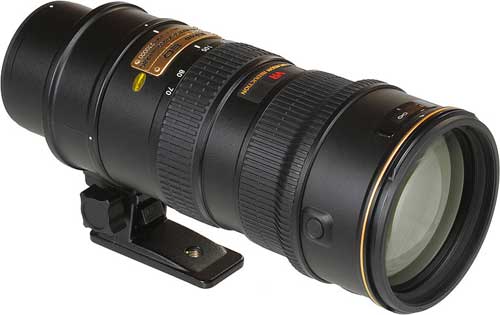Every new Nikkor lens that sports the VR tag seems to do a better job at removing all the unwanted shakiness from a photo. Now, with the AF-S 70-200mm f/2.8G ED VR II, we find a mid-telephoto lens that combines this with a wide aperture to create an optic that can capture zoomed in photos in crisp detail, even while handheld.
Key Features
- Nano Crystal Coat: Reduces the bothersome reflections on the lens due to flare and glare.
- Silent Wave Motor: The inclusion of SWM technology means that there is no noise from the servos on the autofocus mechanisms. This is not only great for video recording where such sounds could be picked up, but in events like a wedding where the sounds of meshing gears are a bit inappropriate.
- Optical Image Stabilization: This allows 4 stops of shutter speed making handheld photography a lot easier and precise.
- Extra-low Dispersion: Chromatic aberration is reduced which makes images sharper.
- Focus as close as 4.6 feet: The wide zoom range on this lens makes it versatile in situations ranging from a casual face portrait to zoomed in pictures of wildlife
- Internal Focus: The noise level of autofocus matters when you are a professional photographer. Internal focus allows quieter autofocus without distracting you or the subject of your photography. Since Nikon 70-200 is a large lens, it gives you longer focus range.
Is it Worth the Money?
According to many professional news and sports photographers, the lens works great for them. Because of its Vibration Reduction system, the impact caused on an image due to motion is reduced by a great degree. Images come out wonderfully when there is low light or when the photographer or the subject is moving. There is hardly any vignetting to speak of through the focal range; corners are as clear and bright as the center when the lens is used wide open.
The autofocus on this lens is fast to the mark. When it comes to manual focus, there are two speed levels: normal and slightly slow. These settings act like the course and fine knobs on a microscope; if you need to dial in the focus just right, the slower manual focus will allow you do so.
My few comments on image quality are entirely positive. The lens is great for wide space distance shooting. Even the furthest details can be captured perfectly and clearly. Even though this lens goes out to the telephoto range, handheld operation can still yield crisp photos thanks to the combination of the vibration reduction, and the wide open f/2.8 aperture that cuts down on exposure time.
Bokeh (the aesthetic quality of blur) is another key feature of this Nikon lens. Out-of-focus rendering is beautiful and the surrounding lights are softened when you capture an image. This is again due to the size of the aperture, which lends itself to a relatively shallow depth of field for any given focal length.
If you deal with wildlife and news photography, then this lens could be perfect for your use. It is sturdy and durable, lasting well past its age, and considering all it’s other traits with this, I would cement this 70-200mm lens as a solid investment.



